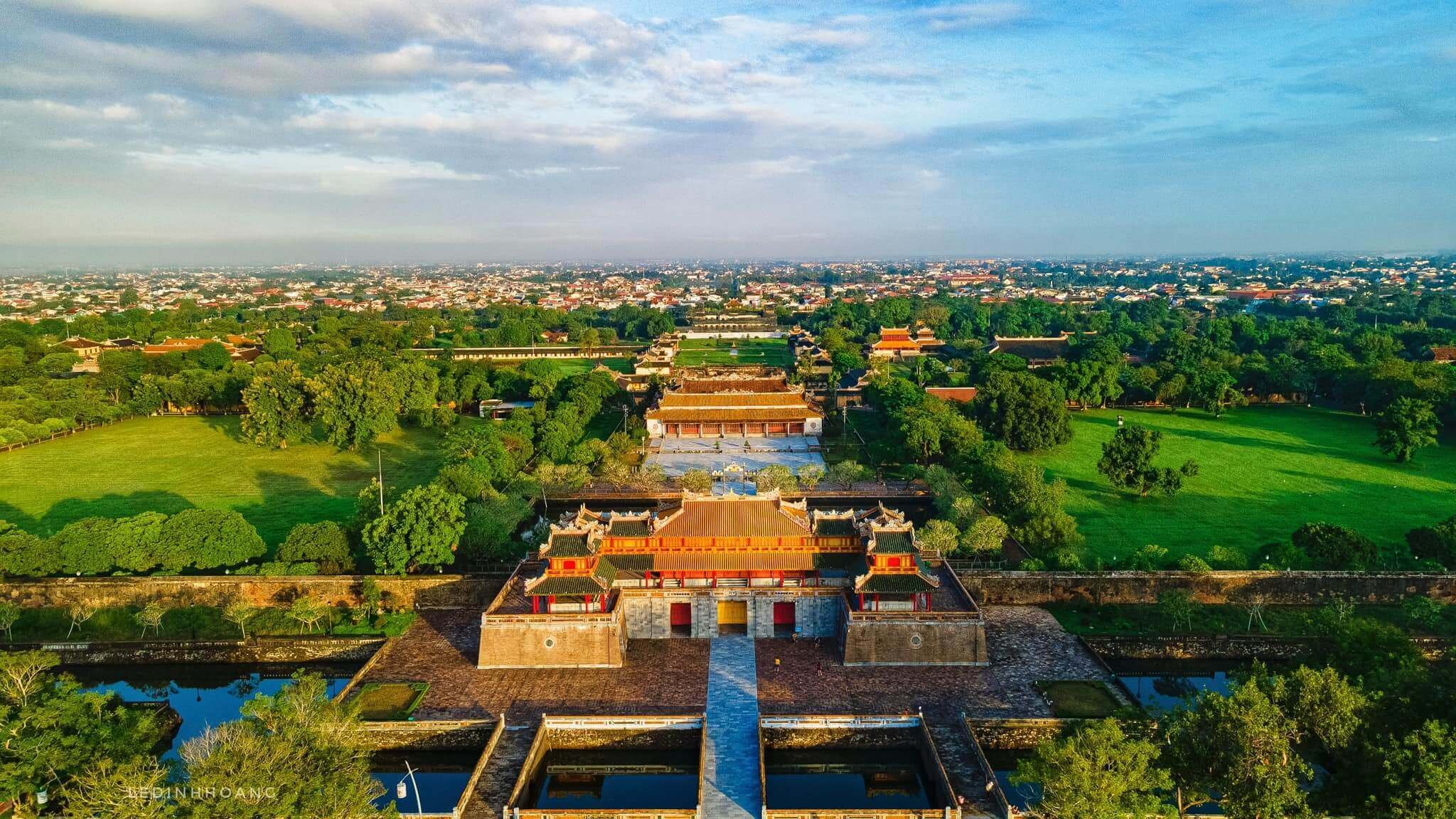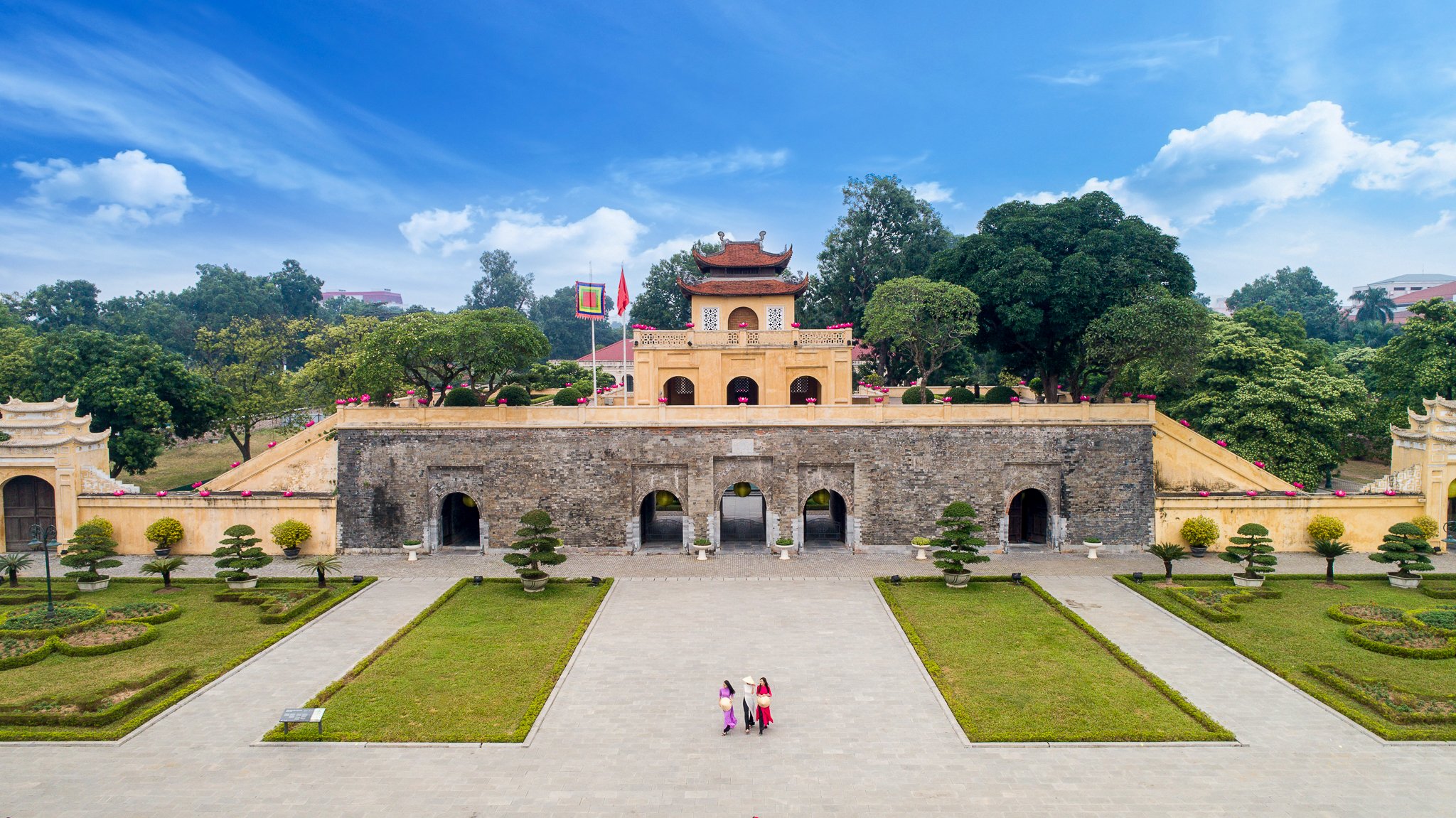8 Vietnamese cultural heritages proudly recognized by UNESCO
25/11/2022
The heritages not only demonstrate a beautiful “S-band”, diverse landscapes, long history, but also attract thousands of domestic and international tourists every year.
Complex of Hue Monuments
Located along the banks of the Perfume River and a few surrounding areas in Thua Thien Hue province, the Complex of Hue Monuments was once the capital of Vietnam from 1802 to 1945. On December 11, 1993, the Complex of Monuments The ancient capital of Hue was inscribed on UNESCO’s World Cultural Heritage List with outstanding global value, symbolizing the prominence of the authority of a lost feudal empire of Vietnam in the most flourishing period of Vietnam. it was in the early nineteenth century – a prominent example of the Eastern feudal capital.

Ha Long Bay
Ha Long Bay is in Quang Ninh province, located in the northeast of Vietnam. With a total area of about 1,533km2, Ha Long Bay owns about 1,600 limestone islands and islets. Ha Long Bay is recognized by UNESCO as a World Natural Heritage: outstanding global value of natural landscape (December 17, 1994) and value of geology and geomorphology (December 2, 2000).

My Son Sanctuary relic site
Located in Quang Nam province, My Son Sanctuary is a complex of many Champa temples, this used to be the place to organize sacrifices and was the place to gather the tombs of the royal princes of the Champa Kingdom during the period. from the VII – XIII centuries. My Son Sanctuary was inscribed on UNESCO’s World Cultural Heritage List on December 1, 1999 with the following criteria: outstanding example of cultural exchange with indigenous cultural integration, reflection vividly reflects the development process of Champa cultural history in Southeast Asian cultural history.

Hoi An Ancient Town
As an ancient town of the Vietnamese people, Hoi An is located in the lower part of the Thu Bon River in Quang Nam province. This place is also known as an international trading port that was formed in the 16th century and especially developed around the 17th – 18th centuries. The ancient town of Hoi An was inscribed on the World Cultural Heritage list by UNESCO on December 1, 1999 with outstanding universal value for an outstanding physical manifestation of a blend of timeless cultures. time in an international trading port, is an outstanding example of preserving a traditional Asian trading port.

Phong Nha – Ke Bang National Park
With an area of 123,326ha located in the northern Truong Son ecological region, Phong Nha – Ke Bang National Park is one of the most unique and beautiful models of complex karst tectonics in Southeast Asia, where the convergence of valuable values. unique geology, geomorphology, climate, biology, landscape and culture as well as history. Phong Nha – Ke Bang was twice recognized by UNESCO as a world natural heritage, of global value in geology and geomorphology (in 2003), value in ecosystems and biodiversity (in 2015).

Imperial Citadel of Thang Long
Imperial Citadel of Thang Long is a complex of relics associated with the history of Thang Long Citadel, Hanoi. This massive architectural work was built by the kings (Ly – Tran – Le) in many historical periods and became the most important relic in the system of Vietnamese monuments. On August 1, 2010, Thang Long Imperial Citadel was recognized by UNESCO as a world cultural heritage. The outstanding global values of this site are recognized by three outstanding features: length cultural history throughout 13 century, continuity of heritage as a center of power, and layers of relics and relics are diverse, rich and lively.

Citadel of the Ho Dynasty
Ho Dynasty citadel was built by Ho Quy Ly in 1397 under King Tran Thuan Tong. This citadel was the capital of Vietnam from 1397 to 1407. Currently, it is one of the few remaining stone ramparts in Southeast Asia. On June 26, 2011, the Ho Dynasty Citadel was recognized by UNESCO as a World Cultural Heritage for its cultural and historical values and unique construction techniques.

Trang An Scenic Landscape Complex
Owning an area of 6226ha, Trang An Scenic Landscape Complex includes 3 adjacent areas: Hoa Lu Ancient Capital Relic, Trang An – Tam Coc – Bich Dong Scenic Landscape Area and Hoa Lu special-use primeval forest. Trang An Scenic Landscape Complex was recognized by UNESCO as a world cultural and natural heritage on June 23, 2014. This is a world cultural and natural heritage on June 23, 2014. This is the only mixed heritage of Vietnam, meeting the outstanding criteria of: culture – aesthetic beauty and geology – geomorphology.

RELATED ARTICLES
HERITAGES OF VIETNAM